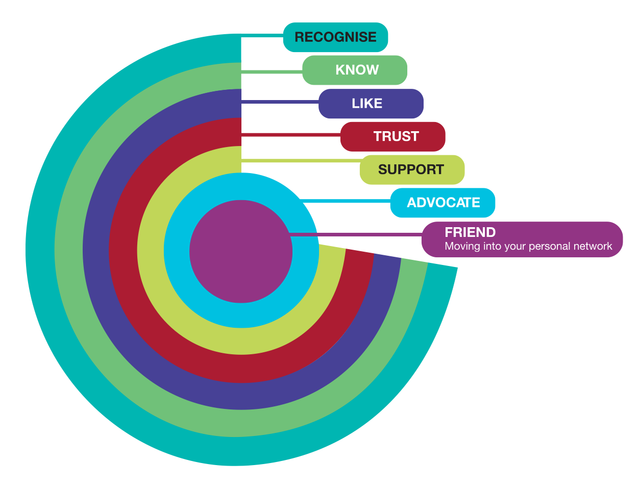Relationships
Is Your Network as Strong as You Think?
The danger of finding but not nurturing connections
Posted July 25, 2022 Reviewed by Hara Estroff Marano
Key points
- Networks are not binary, with people either "in your network" or outside it.
- Studies on the average size of network are often used out of context and can be misleading.
- Powerful connections come through nurturing relationships to the point where people want to help you.
- If you don't follow up after meeting someone, you will become strangers again within weeks.
You attend a networking event or conference, enjoy some interesting conversations and exchange a few business cards (if you still possess them!).
You meet someone engaging at a dinner party and exchange phone numbers and email addresses.
You sit next to someone at a work meeting and connect with each other on LinkedIn.
All good ways of building your network.
Or are they?
One of the biggest mistakes that people make when looking to develop strong professional networks is to believe that those networks are binary. You’re either "in my network" or out.
Studies and theories designed to calculate the average number of people in a network abound. The two most famous theories are Girard’s Law, which states that the average person knows 250 people, and Dunbar’s Number, which puts the number at 150.
There are plenty of issues with the use of these statistics. For a start, they are often used to make an argument (the average size of somebody’s network) that wasn’t the premise of the original studies.
For example, Robin Dunbar’s study explored how many people the average person could have a meaningful connection with and was based on his research exploring a connection between primate brain size and average group social size, and then the results were extrapolated for human beings.
Taking a less academically rigorous approach, U.S. salesman Joe Girard came up with his Law of 250 when he asked a funeral director how many people typically turned up to a Protestant funeral and was told that typically 250 people will show up. When he asked a wedding caterer a similar question, he was told that 250 people will typically show up on each side of the aisle.
Girard then concluded that most people have 250 people in their lives who would show up at their funeral or wedding.
Whatever you might think of the arguments made by Dunbar and Girard, particularly in the hyperconnected internet age (both theories predate widespread social media use), there are not many people who would argue that a conversation at a conference or an exchange of business cards indicates a meaningful connection or a wedding invitation.
Just assuming that people are in your network after a conversation and ticking off the task of connecting will, simply, lead to disenchantment with the whole process. The key word is meaningful, but this detail is often overlooked by people who focus on collecting business cards and LinkedIn connections.
Shift the focus away from ‘networking’ and instead think of relationship-building. That simple step helps to highlight the steps you need to take.
Rather than networks being binary, each person we meet goes on a journey with us. In some cases that journey ends abruptly and you become strangers again quickly. This happens more quickly than you might imagine, as people fail to follow up after their initial conversation.
With more thought and deliberation, you can take new contacts into the heart of your network. Move away from seeing people as in or out of networks, and picture instead seven stages of professional relationships.

When we first meet people and then see them again a few weeks later, we are likely to recognise each other. But how long does that recognition last? A lot will depend on the rapport you had, the impression you made on each other, and the nature of your conversation. Without follow-up, it’s likely that you will become strangers again in a matter of weeks.
We need to build on the connection to ensure that people stay within our network, before nurturing it to strengthen the bond. In The Go-Giver by Bob Burg and John David Mann, the authors state that, "All things being equal, people will do business with, and refer business to, those people they know, like, and trust." You might not find rapport naturally with everyone you meet; sometimes you’ll be looking to establish mutual respect rather than a relationship based on liking each other.
Whether you exchange cards at a networking event,or sit next to someone at a dinner party, taking steps to follow up, cement the connection, and build the relationships so that you know, like, and trust each other will lead to much stronger networks going forward.
The sweet spot, though, are the next two levels—Supporters and Advocates. A Supporter is someone who, if you picked up the phone and asked, would be happy to help you. With an Advocate, you don’t even need to ask. If they see an opportunity to help you, they will recognise it and take action.
In some cases, professional relationships become friendships and become personal relationships, but that’s not our goal. It’s a nice bonus if it’s appropriate.
References
R.I.M. Dunbar,
Neocortex size as a constraint on group size in primates,
Journal of Human Evolution,
Volume 22, Issue 6,
1992,
Pages 469-493,
ISSN 0047-2484,
https://doi.org/10.1016/0047-2484(92)90081-J.
How To Sell Anything to Anybody, Joe Girard, Warner Books, NY 1981
The Go Giver, Bob Burg and John David Mann, Penguin, 2010




